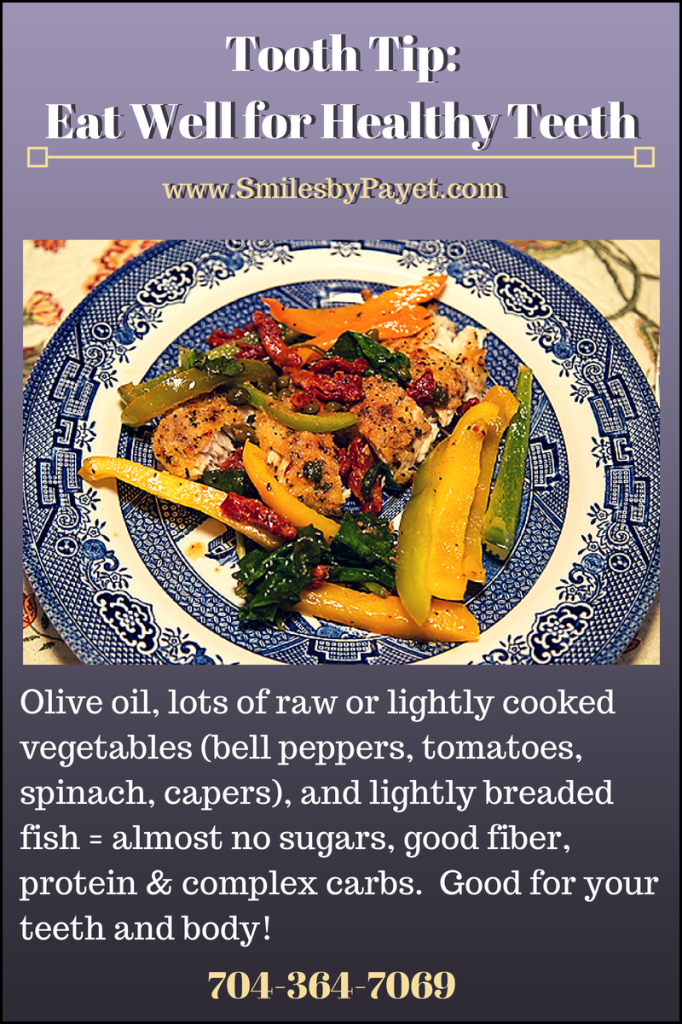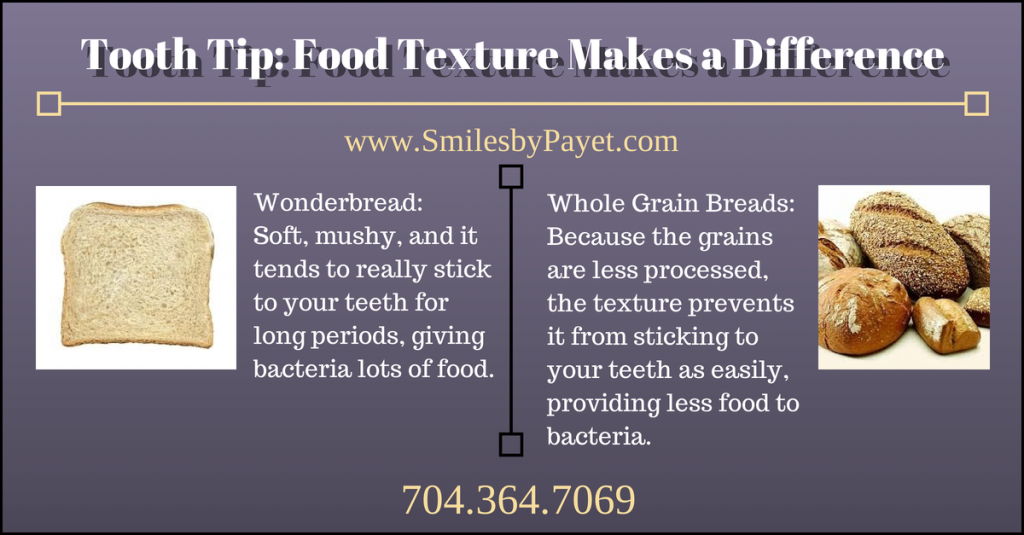If you’ve been reading my blog long enough, you may have seen these 2 articles on some big changes to my diet that I wrote in response to learning that my cholesterol was much too high:
To quickly summarize, though, back in June 2013, my physician told me that my cholesterol level was 244, and that unless I wanted to start medications soon, I’d better make some serious changes to my lifestyle: more exercise, less meat, less dairy, more seafood and vegetable/fruits, etc. And because I knew that I could do it, I did. But the lesson for today’s blog post, though, is not so much about overall health, but the simple idea that eating a healthy diet of seafood and lots of raw or minimally cooked vegetables and fruits is not only going to keep your body healthy, but that same diet is good for your teeth.
Benefits of Vegetables for Your Teeth
Raw fruits and vegetables of any kind are good for your teeth, because the firm texture helps clean the teeth, they don’t provide the bacteria in your mouth with easy-to-use sugars to produce enamel-destroying acid, they tend to not stick to your teeth, and of course, they provide necessary vitamins and nutrients. Lightly steamed vegetables are just about as good, because they still retain most of the texture. Once you get vegetables really cooked, not only do you lose a lot of the nutrients, but you lose the texture that provides a physical cleaning action while chewing.

Juicing is Great, but Watch Out for Sugars and Acidity
Sure, “juicing” has long been the rage in alternative medicine, and certainly conventional medicine (and dentistry) agree that fruits and vegetables are healthy for your body, but there there are some real risks to juicing that most people don’t realize. When you blend everything, the following happens:
- You’re losing the texture of many fruits and/or vegetables that help physically clean the teeth
- You’re concentrating the sugars
- Many fruits are highly acidic
So with juicing, while you do get concentrated nutrients, you’re actually putting your teeth at risk because of the concentrated sugars and acidity. Read more about how much sugar is in those “healthy” juices.
Love Pasta? Cook al Dente
You’ll notice a trend here when it comes to foods that are healthy for your teeth: texture. If you’re eating carbohydrates such as pasta or bread, this is again important. Think about the difference between something like Wonderbread and a whole grain bread. The same holds true for pastas. But even if you don’t like whole grain pastas (and I confess, I don’t), if you take care to not overcook the pasta, the firmer texture will leave less food on your teeth that can turn into tooth plaque. Soft, mushy foods leave that yucky whitish film on your teeth, called material alba, which accumulates into plaque, and if left long enough, will eventually harden and become calculus, or tartar.

If you’re on Pinterest, jump on over and check out our collections of healthy (and of course, tasty) recipes! Honestly and truly, it’s not that hard to eat a healthy diet that’s good for both your teeth and body.






